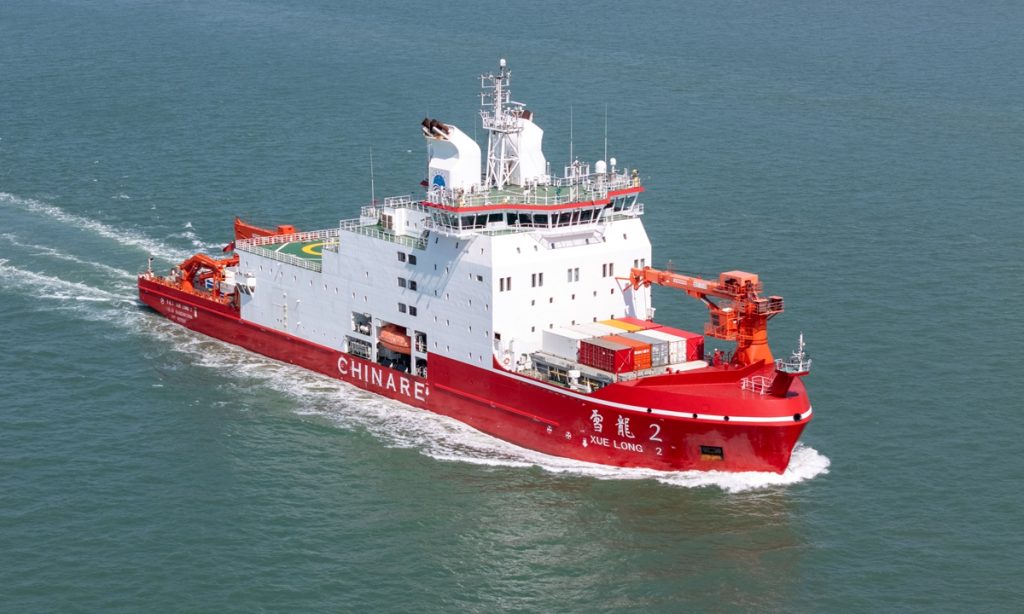China's 41st Antarctic mission sets sail, welcoming first HKSAR scientists

China's 41st Antarctic expedition team departed on a nearly seven-month mission to Antarctica on Friday, according to the Ministry of Natural Resources. During this time, researchers will work on building supporting infrastructure for the Qinling Station in Antarctica, study the effects of climate change on the Antarctic ecosystem, and engage in international research and logistical collaboration.
This also marks the first time scientists from Hong Kong have been selected to join the national Antarctic expedition team. It not only reflects the country's recognition of Hong Kong's polar research efforts but also highlights Hong Kong's potential to play an active role in the nation's scientific research and development tasks, marking a milestone for the region, Hong Kong's Chief Secretary for Administration Eric Chan Kwok-ki said on Friday.
During the mission, the expedition team will finalize the installation and interior work finishing the primary building structure at Qinling Station. The team will also, for the first time, conduct an overwintering research mission in Antarctica.
A primary scientific goal of the expedition is to investigate the impact of climate change on the Antarctic ecosystem. Using the research vessels Xuelong and Xuelong 2, the team will conduct comprehensive monitoring in key regions, including Prydz Bay in East Antarctica, the Cosmonauts Sea, the Ross Sea, the Amundsen Sea, and the surrounding waters of the Antarctic Peninsula.
The surveys will cover key areas such as biological ecosystems, aquatic environments, sedimentary conditions, atmospheric conditions, and pollutant distribution. Additional studies on ecosystem health, coastal marine environments, and soil conditions will also be carried out at China's Kunlun, Taishan, Zhongshan, and Great Wall stations to deepen understanding of Antarctica's role in global climate change.
The expedition will also expand international cooperation across scientific research and logistical support. Through initiatives such as the Circumpolar Action Plan, the team will pursue joint research on critical frontiers in Antarctic science.
Key collaborative projects include an aerial survey of the Enderby Land region with Norwegian and Australian partners to examine ice, ocean, and bedrock interactions, which are essential for accurately assessing the ice sheet's mass balance and stability.
Furthermore, China will continue to strengthen bilateral and multilateral logistical partnerships with the US, the UK, Australia, Italy, South Korea, Russia, and Chile.
The team is composed of over 500 members from more than 80 domestic organizations, and supported by three ships. Xuelong and Xuelong 2, departing from Guangzhou, South China's Guangdong Province, will primarily handle scientific research, personnel transportation, and logistical resupply, while the Yong Sheng cargo vessel, departing from Zhangjiagang, East China's Jiangsu Province, will transport essential construction materials for Qinling Station's infrastructure.
The expedition is expected to return to China in May 2025.
This year commemorates the 40th anniversary of the start of China's polar expeditions. Over the past four decades, China has continuously strengthened its comprehensive capabilities in polar expedition and actively cooperated with relevant countries, and has made significant contributions toward understanding, protecting, and utilizing polar resources.
China's 40th Antarctic expedition successfully concluded on April 10, with the Xuelong returning to port in Qingdao, Shandong Province. The mission yielded significant results, such as completing an aerial scientific survey of the ice sheet margins of Queen Maud Land and Enderby Land, as part of a major international polar cooperation project.